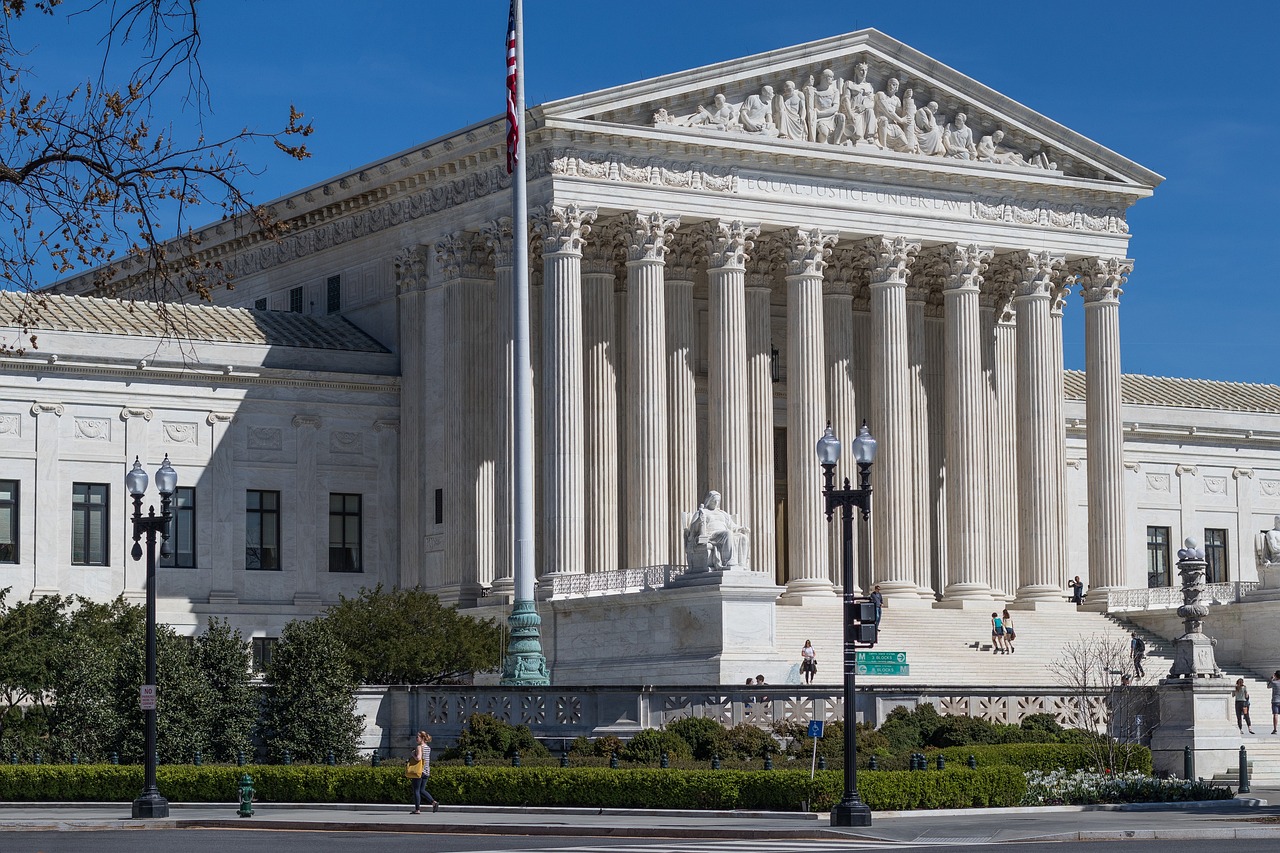The US Supreme Court on Friday upheld a federal law barring gun ownership for individuals who have been subjected to domestic violence restraining orders.
The case, US v. Rahimi, centered on Zackey Rahimi, who—according to case documents—was subjected to a restraining order after publicly beating his girlfriend and then firing shots. Subsequently, in a separate incident, he was charged with aggravated assault for threatening a second woman with a gun. While in police custody, he was identified as a suspect in five other shootings. Police searched his home, and discovered two firearms, ammunition, and a copy of the restraining order.
Rahimi was indicted at that point under federal law 18 U.S.C. § 922(g)(8), which proscribes gun ownership for anyone who has been subjected to a court-issued restraining order based on findings that the individual “represents a credible threat to the physical safety of such intimate partner or child.”
Though the law applied directly to his case, Rahimi moved to dismiss the indictment, arguing that the law violated the Second Amendment to the US Constitution, which enshrines the “right of the people to keep and bear Arms.” After a federal district court rejected Rahimi’s argument, he pleaded guilty but appealed the lower court’s constitutional finding.
In the meantime, the Supreme Court issued an on-point ruling in the case of New York State Rifle & Pistol Association v. Bruen. That case determined that if a gun regulation is challenged under the Second Amendment, and a court determines that the conduct at issue falls within the scope of Second Amendment protections, the government bears the burden of demonstrating that the restriction “is consistent with the Nation’s historical tradition of firearm regulation.”
Based on this new precedent, the US Court of Appeals for the Fifth Circuit ruled that the lower court finding should be vacated because the government had not proven § 922(g)(8) aligned with historical firearms regulations.
The following month, prosecutors appealed to the Supreme Court, asking, “Whether 18 U.S.C. 922(g)(8), which prohibits the possession of firearms by persons subject to domestic violence restraining orders, violates the Second Amendment on its face.”
The court sided with the government, holding, “When an individual has been found by a court to pose a credible threat to the physical safety of another, that individual may be temporarily disarmed consistent with the Second Amendment.”
The court reasoned that while the right to bear arms is “fundamental … to our system of ordered liberty,” it “is not unlimited,” and determined that since the founding of the nation, US authorities have sought “to stop individuals who threaten physical harm to others from misusing firearms.”
Writing for the majority, Chief Justice John Roberts wrote:
[W]e have no trouble concluding that Section 922(g)(8) survives Rahimi’s facial challenge. Our tradition of firearm regulation allows the Government to disarm individuals who present a credible threat to the physical safety of others.
The justices also found that in vacating Rahimi’s conviction, the Fifth Circuit erred by seeking a “historical twin” to 922(g)(8) rather than a “historical analogue.” In Bruen, the majority opinion explained this distinction:
[A]nalogical reasoning requires only that the government identify a well-established and representative historical analogue, not a historical twin. So even if a modernday regulation is not a dead ringer for historical precursors, it still may be analogous enough to pass constitutional muster.
The lone dissent in US v. Rahimi came from Justice Clarence Thomas, who disagreed with the majority’s conclusion that the ban fell within the scope of US historical tradition. Thomas referred to Bruen’s test for such cases, which requires a court to determine that the law at issue targets conduct that is protected by the Second Amendment, and the government’s ability to demonstrate that the disputed law is consistent with historical US firearms regulation. Applying this analysis, Thomas argued that by banning gun possession, Section 922(g)(8) directly applies to conduct protected by the Second Amendment. He asserted the government had failed to “identify even a single regulation with an analogous burden and justification.”


